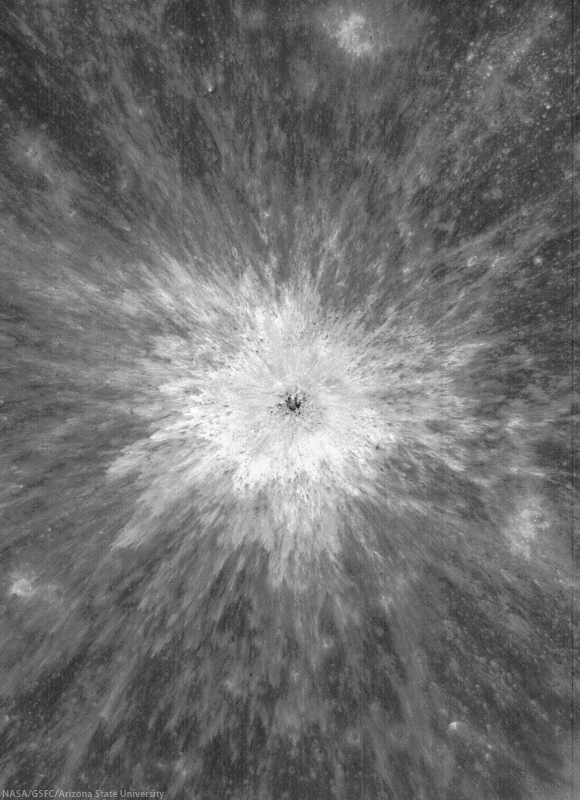 |
| Unnamed, very fresh crater on the north side of Mare Fecunditatis, near 3.637°N, 48.93°E and a field of view about 1400 meters across; under a high Sun (illumination incidence angle 13.5° - LROC Narrow Angle Camera (NAC) M187921190LR, LRO orbit 12758, April 1, 2012; native resolution 0.93 meters per pixel from 108.16 kilometers [NASA/GSFC/Arizona State University]. |
Hiroyuki Sato
LROC News System
Today's Featured Image highlights an unnamed small crater (roughly 180 meters in diameter) at the northern edge of Mare Fecunditatis, near the Catena Taruntis.
The strong reflectance contrast between the ejecta deposit and the surrounding background in the opening image suggests that this crater is still very flesh and young.
The low reflectance materials in the center of this crater are probably impact melts or a different rock type in the subsurface that was excavated by the impact. The numerous dark dots intermixed with the high reflectance ejecta might be same dark materials as the one on the crater floor, or more likely secondary craters excavating the background mature material.
This beautiful ejecta field consists of numerous lobes systematically piled on the top of adjacent outer lobes, resulting in a view like a stop motion picture of the impact event. Apparently, ejecta that landed far away from the impact center settled on the ground earlier than the portion that traveled a shorter distance. High resolution images of these very fresh craters supply key information about impact cratering, which improves our knowledge of the craters and helps to reveal the history of any airless planetary bodies in our solar system.
Explore this beautiful fresh crater on Mare Fecunditatis in full NAC frame yourself, HERE.
LROC News System
Today's Featured Image highlights an unnamed small crater (roughly 180 meters in diameter) at the northern edge of Mare Fecunditatis, near the Catena Taruntis.
The strong reflectance contrast between the ejecta deposit and the surrounding background in the opening image suggests that this crater is still very flesh and young.
The low reflectance materials in the center of this crater are probably impact melts or a different rock type in the subsurface that was excavated by the impact. The numerous dark dots intermixed with the high reflectance ejecta might be same dark materials as the one on the crater floor, or more likely secondary craters excavating the background mature material.
 |
| A step backward to reveal a roughly 4 km field of view from the same mosaic of the left and right frames of LROC NAC observation M187921190, showing the delicate widespread bright field of rough ejecta - against the very optically mature surface of Fecunditatis |
 |
| Footprint of LROC NAC M187821190L (on the right) and R (on the left). An LROC Wide Angle Camera montage assembled using the new LROC Lunaserv online application [NASA/GSFC/Arizona State University]. |


No comments:
Post a Comment